Fix your feet and ride faster: here are the surprising ways looking after your feet will make you a better cyclist
Performance engineer at INEOS Grenadiers and current World Hour Record holder Bigham talks about the connection between feet, back pain and training consistency
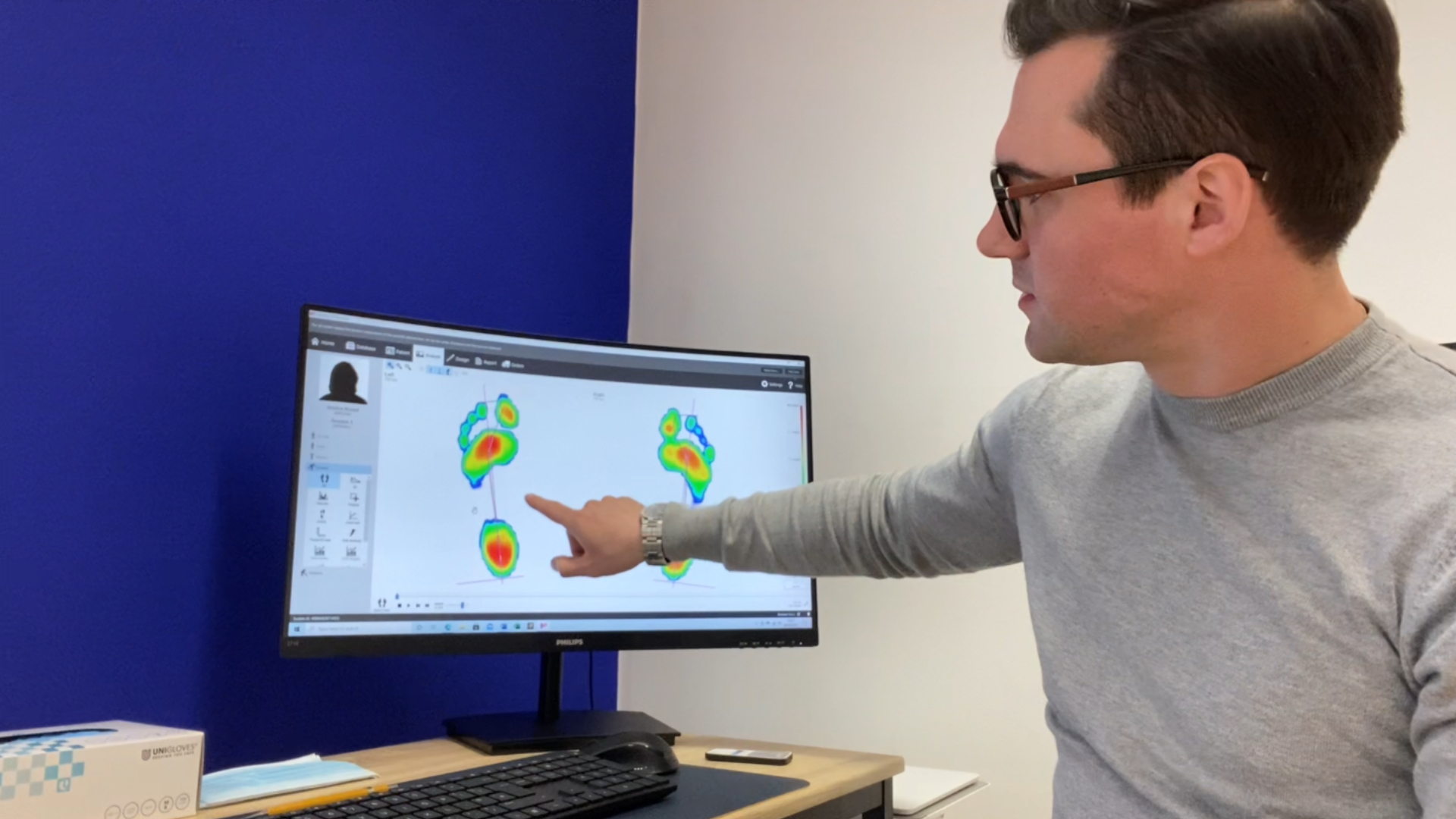
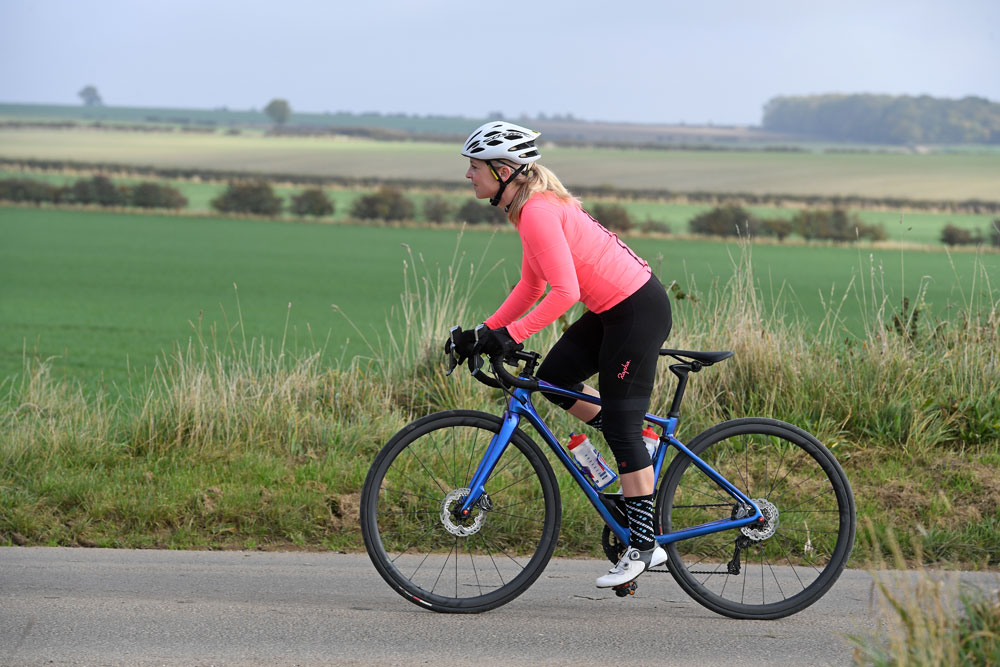
For someone who’s built such a reputation for speed-seeking optimisations, you might be surprised to learn that current World Hour Record holder, Dan Bigham's interest in feet begins not with fine-tuning performance but with injury. And not with cycling, but with distance running…
“I always had collapsing arches which caused problems with my plantar fascia,” Bigham admitted. “I had numerous calf and Achilles problems. It was my reason for giving up triathlon.” Collapsed or fallen arches describe when a foot spreads flat on the floor when standing instead of having a curve in the midfoot.
Resilience is a big watch-word in professional cycling and coaching, injured athletes cannot train consistently and if you cannot train consistently you cannot perform to your best. Bigham’s collapsing arches were leading to a series of issues.
“When your arches collapse, other things control for that, the problem goes up the chain,” he recalled. “The pain and swelling leads to knee tracking issues and more muscles start to compensate. I have two bulging discs in my back. My back ends up in pieces and I can’t ride my bike.”
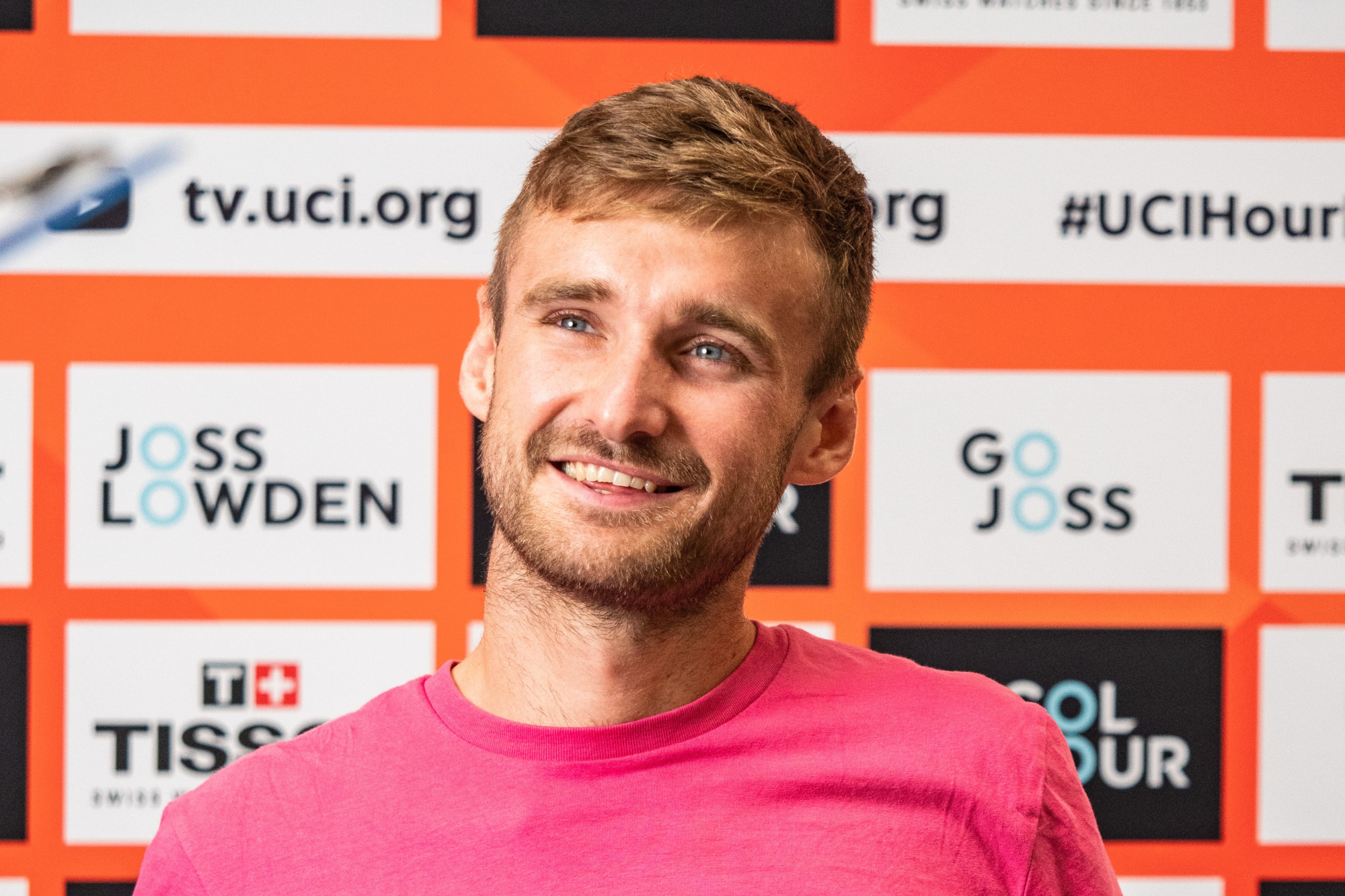
Bigham experimented with various orthotic solutions but it was not until he heard about Christophe Champs - an expert in biomechanics, and the founder of PODO Clinic and orthotic Workshop in London - from Tao Geoghegan-Hart and other pro-cyclists that he found a solution that actually worked.
Although PODO London now supplies Ribble Weldtite Pro Cycling team with orthotics, initially it was pro-riders seeking out PODO because Champs “was able to quickly see what was needed and why.”
Christophe Champs’ life-long passion for working with orthotics rings through in the excitement with which he talks about feet. “Your feet contain 56 bones, they are one-quarter of your total skeleton,” he begins, “you support three times your own body weight on one foot when you run. The impact of the foot on your whole body is massive.”
Get The Leadout Newsletter
The latest race content, interviews, features, reviews and expert buying guides, direct to your inbox!
Our bodies are a kinetic chain, everything from our foot to our head is linked, “if the knee is mis-tracking it will create problems everywhere.” Podiatry and orthotics are frequently undervalued, yet foot problems can be the root cause of anything from persistent knee pain, through to back pain or neck pain.
Why cyclists should be looking at their feet
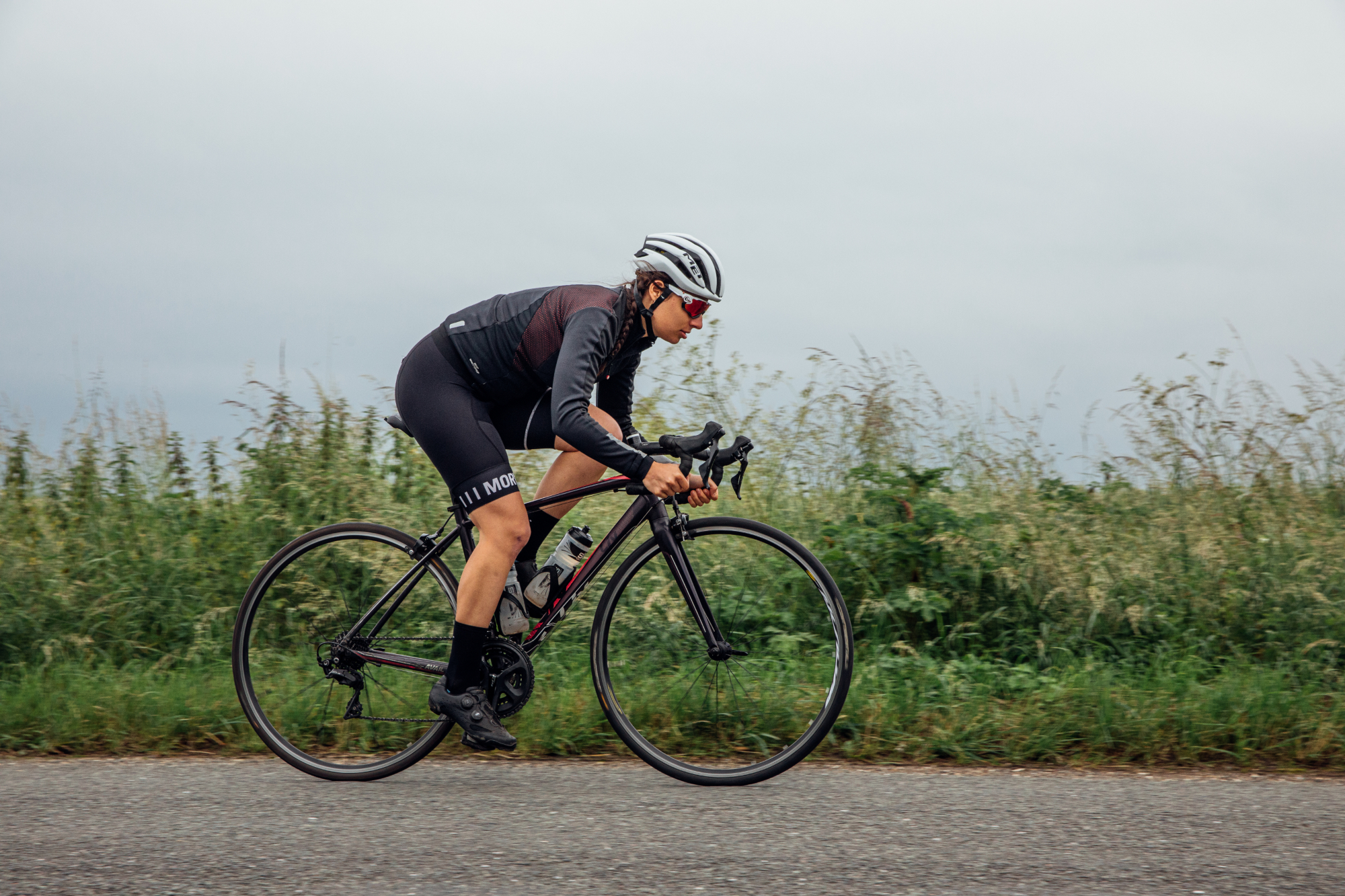
One of the reasons cyclists might neglect to think of their feet is that unlike say runners or footballers, the foot is never in direct contact with the ground.
“Cyclists are the most interesting people to come through my door,” says Champs. If we think of our feet at all it is as the levers that push the pedals round. But it is the repetitive action of ‘pushing the pedals around’ that can lead to overuse injuries.
“On the bike you have three contact points; your feet, your bottom and your hands. The alignment and symmetry of the body is critical because you repeat the same action again and again,” Champs explains, “but human beings are the least symmetrical of all things and the bike is completely symmetrical.
"The impact of the foot is massive, if the knee is mis-tracking it will create problems everywhere.”
When cycling your knee does not thump straight up and down like a piston. “Cycling is a pronation sport, the knee makes a figure of 8 shape,” but the amount of movement at the knee is critical.
“In cycling you repeat the same movement over and over again. There is a fixed point with the saddle at the top and pedal at the bottom, the knee is stuck in its cycle. If it is a bad movement it can only get worse, causing problems with other muscles.”
At this point Champs' French heritage shows as he waxes lyrical about the relationship between bike and rider, how the perfect relationship generates the souplesse of a seemingly effortless pedal stroke which, as all fans of pro cycling know, is a joy to watch.
Orthotics could be the answer
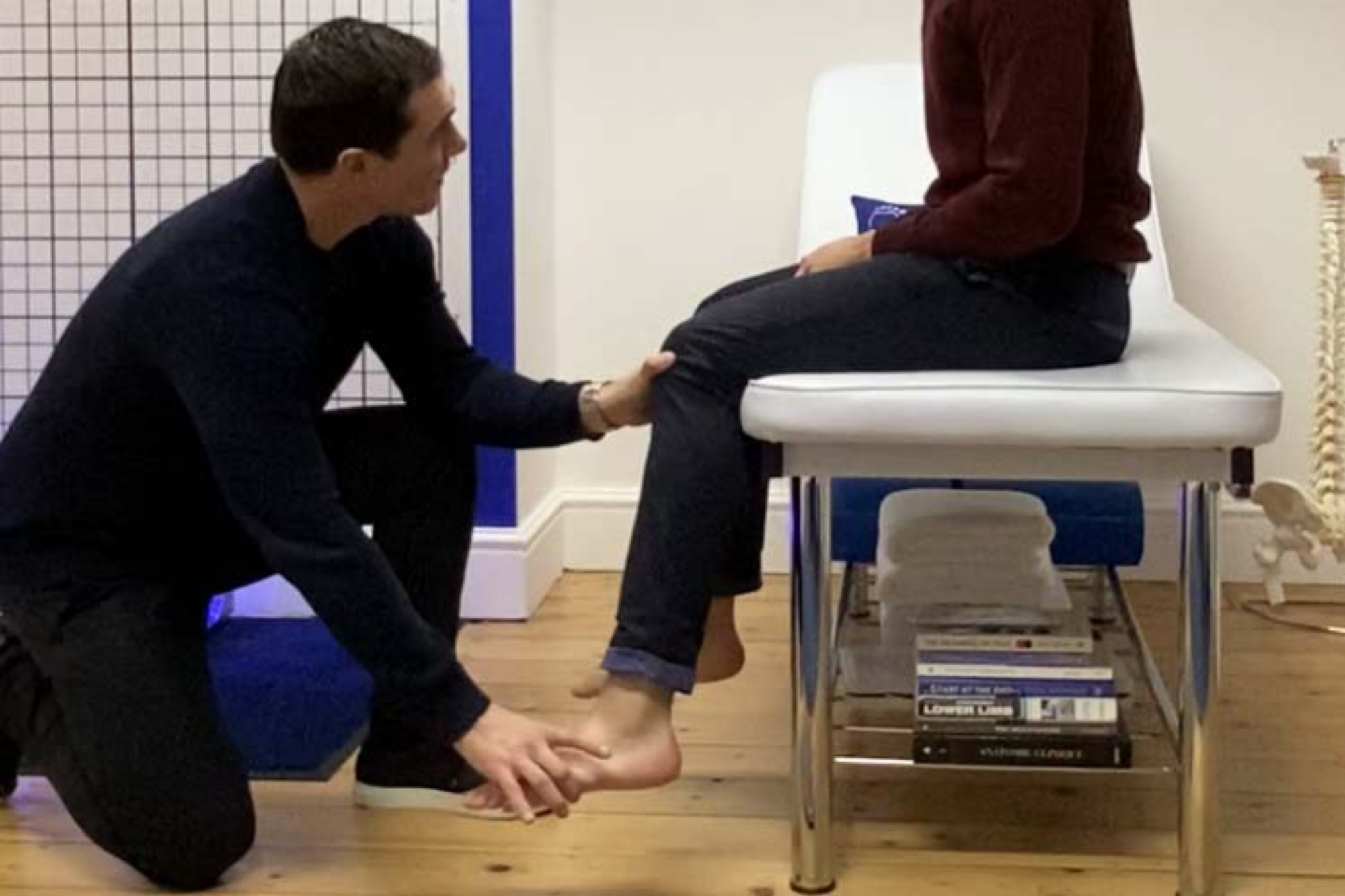
Orthotics are inserts worn within your shoes to help correct the position of the bones in your feet.
"An orthotic does not make your foot lazy, it does not work less," Champs notes. "It is about positioning the bones in an active way, so the muscles are working. In every moment there is a muscle doing a job [contracting] and its opposite muscle relaxing. Orthotics allow your muscles to work together the way they should be.”
Orthotics are available everywhere, you can pick up a pair in a chemist for less than / $15 / £10, but it is highly unlikely that an off-the-peg pair will solve your problems.
“Off the shelf products cannot produce the same results, they too are symmetrical,” Champs states. All day long we try to force our unsymmetrical feet and body into symmetrical shoes and onto a symmetrical bike, when we need to be working with our natural differences.
“Orthotics are made for your feet, not for your shoes. Two feet are two different patients. The left and the right! You should never adjust the body as a ‘good’ side and a ‘bad’ side. You have two different sides and they need to be addressed independently,” says Champs.
Champs feels strongly that the off-the-shelf solutions and lack of regulation is part of the reason that podiatry and orthotics are not part of standard injury care. Podiatry and orthotics only gets a mention by healthcare professionals when the problem is foot related.
One of Champs’ missions is to spread education and understanding about what orthotics can treat: “Orthotics are not just about feet. The upper body is what I treat the most. 90 per cent is above the foot pain, 70 per cent leads up to the neck. Treat the root cause, the arch, the forefoot and the improvements will be felt throughout the body.”
Expertise is everything
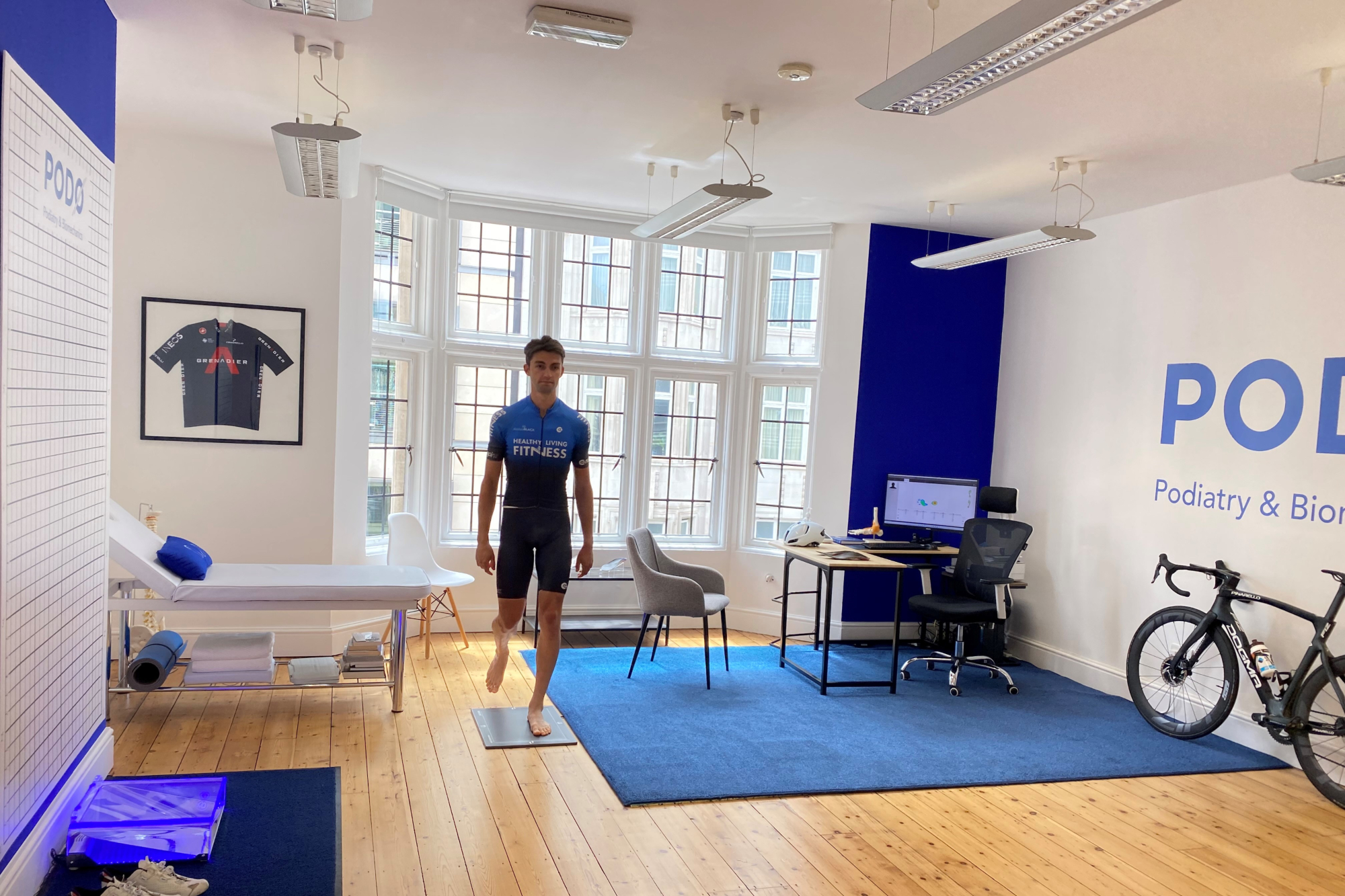
One of the problems with the easy availability of ready-made orthotics is that individuals make their own assessments of their needs.
“People try to diagnose themselves, but it is not enough. You need an external eye, a trained eye. You need a person to look at you and understand what they are seeing,” says Champs. You also need someone who understands the pathology of pain, who is connecting the dots not just looking at the shape of the foot.
“There is fundamentally nothing wrong with a flat foot or arched foot – it is whether there is a problem related to it. If there is pain there is a problem.”
Bigham describes his first experience at PODO London: “We started with a discussion of my problems, then looked at my shoes and the inserts I had. We moved on to walking, then pressure mapping. Christophe uses a cool system with a mirror under a Perspex table so he can see the underside of your foot as you are using it.” Champs explains his examination as a jigsaw puzzle: “I spend 90 minutes with a patient, I flip lots of pieces of the puzzle to see the whole picture.”
Creating a custom orthotic
Each orthotic is completely custom, even left and right are different. Thermo-moldable materials are used, with the exact layering and composition dependent on the person.
PODO uses flexible materials instead of hard plastics which provide a more natural sensation and require no ‘bedding-in’ period. “Cyclists think that orthotics should be hard, that they need to transfer the power to the pedal and that is it. We must remember that there is a relationship between the cyclist and the bike, between the insole and the rider. It is the only opportunity in the connection to introduce some flexibility. The shoe is stiff, the pedal is stiff, the crank is stiff.”
A series of thin layers, between three and seven different materials, are moulded directly onto your feet, glued together and then shaped, always with your foot for reference until the final version is perfect. There is no waiting and you leave your appointment with your new orthotics ready to wear.
Once you have your orthotics PODO continues to support and assess how your body is adapting to them, Champs says: “I have clients who ask me for advice before they buy new shoes. I tell them to send me the pictures so I can help them to make the right choice.”
Bigham, a master of performance details himself, was impressed by the after-care. “Christophe also offered lots of other useful advice such as how to tie your shoelaces properly," he recalls. "No one ever tells you the details of footcare!”
Use daily and not just when cycling
One common mistake that cyclists make with getting orthotics is that they don’t use them as directed, maybe only in their cycling shoes but not for other activities. “Orthotics do not change your body, they only work when you use them. They are like glasses,” Champs explains, “when you need to wear them depends on your issue.”
Endurance cyclists spend many hours training. “Tao was the first cyclist I saw – I asked him how much he wore his orthotics and he said every day," Champs recalls. "When I calculated his training miles it was two times round the planet!” It’s easy to see how those miles could add up to an injury if there was an uncorrected mechanical problem.
Bigham for example uses his all the time, but is particularly aware of their benefits in the gym. “With my training I have been in the gym a lot, often lifting heavy weights in squats and deadlifts," he begins. "If your feet are unstable it can affect knee tracking which is even more of a risk when under load. Whatever shoes I am wearing I have orthotics in. There is no time when it doesn’t make sense to use them.”
One thing you can’t do with orthotics is make them yourself. Both Bigham and Champs told the same story of Bigham’s home-made orthotics after his were lost with his baggage: “He tried to make his own using packing tape! You cannot do a DIY attempt!” The fact that Bigham seriously considered fashioning his own shows how indispensable orthotics are once you feel they are working.
Pain-free performance
Talking to Bigham and Champs it becomes obvious that more awareness of orthotics is needed. If you have neck or back pain your feet are not always analysed or brought into the discussion.
Orthotics is a conservative treatment that works with your body and is unlikely to worsen an injury. If there were to be problems the orthotics can be adjusted or no longer worn. Champs feels sometimes the conservative options are overlooked: “In the UK health insurance companies can prefer to cover surgery and not orthotics,” meaning that many people do not even know this option is open to them.
Orthotics can have a reputation as being ineffective but the difference between a cheap pair from your local chemist, fitted without a diagnosis, and a custom-made pair is immense. Since having his first set of orthotics made by PODO London Bigham says “everything has improved. You think it is a small problem at your feet but it can go up the chain and lead to much bigger issues, ones that prevent you from training.
"You aren’t going to put your insoles in and gain 10 watts, it’s not about that, it’s about resilience and avoiding injury,” explains Bigham, “It eradicated my calf and Achilles injury which led to putting me in a good place for the hour record.”
It’s a view supported by Champs: “It’s not always about performance, it is about pain. Pain that you have off the bike will lead to you having to compensate, you will over use some muscles. If you are good and healthy off the bike it will help you perform better on the bike.”
However, solving the problem will also benefit performance even if that is not the primary motivation. Champs concludes: “On the one hand you avoid injury and on the other you make your mechanics better. It is a double win!”
A cycling consultation at PODO London is £369 including everything: Footwear, biomechanical and postural assessments, gait analysis, 1 pair of custom moulded orthotics and any further check-ups.

Thank you for reading 20 articles this month* Join now for unlimited access
Enjoy your first month for just £1 / $1 / €1
*Read 5 free articles per month without a subscription

Join now for unlimited access
Try first month for just £1 / $1 / €1
Hannah Reynolds interest in cycling began while studying for a degree in Sports Science at the University College Chichester and surrounded by elite level cyclists. She is now undertaking a PhD at Sheffield Hallam University investigating the use of e-bikes by older people.
A committed dabbler whose passion outweighed her talent Reynolds has competed across all disciplines of cycling bar BMX. In the very distant past she has been south-east road race champion, southern cyclo-cross champion and finished third in the European 24hr Solo mountain-bike champs in 2011. She was also the Fitness Editor of Cycling Weekly for 15 years.
Hannah Reynolds is author of several cycling books, France-en-Velo a guide to the ultimate 1000 mile cycle route from the Channel to Med; Britain's Best Bike Ride. LEJOG1000; A 1000 mile journey from Land's End to John o' Groats and 1001 Cycling Tips.
-
 'I'll take a top 10, that's alright in the end' - Fred Wright finishes best of British at Paris-Roubaix
'I'll take a top 10, that's alright in the end' - Fred Wright finishes best of British at Paris-RoubaixBahrain-Victorious rider came back from a mechanical on the Arenberg to place ninth
By Adam Becket Published
-
 'This is the furthest ride I've actually ever done' - Matthew Brennan lights up Paris-Roubaix at 19 years old
'This is the furthest ride I've actually ever done' - Matthew Brennan lights up Paris-Roubaix at 19 years oldThe day's youngest rider reflects on 'killer' Monument debut
By Tom Davidson Published